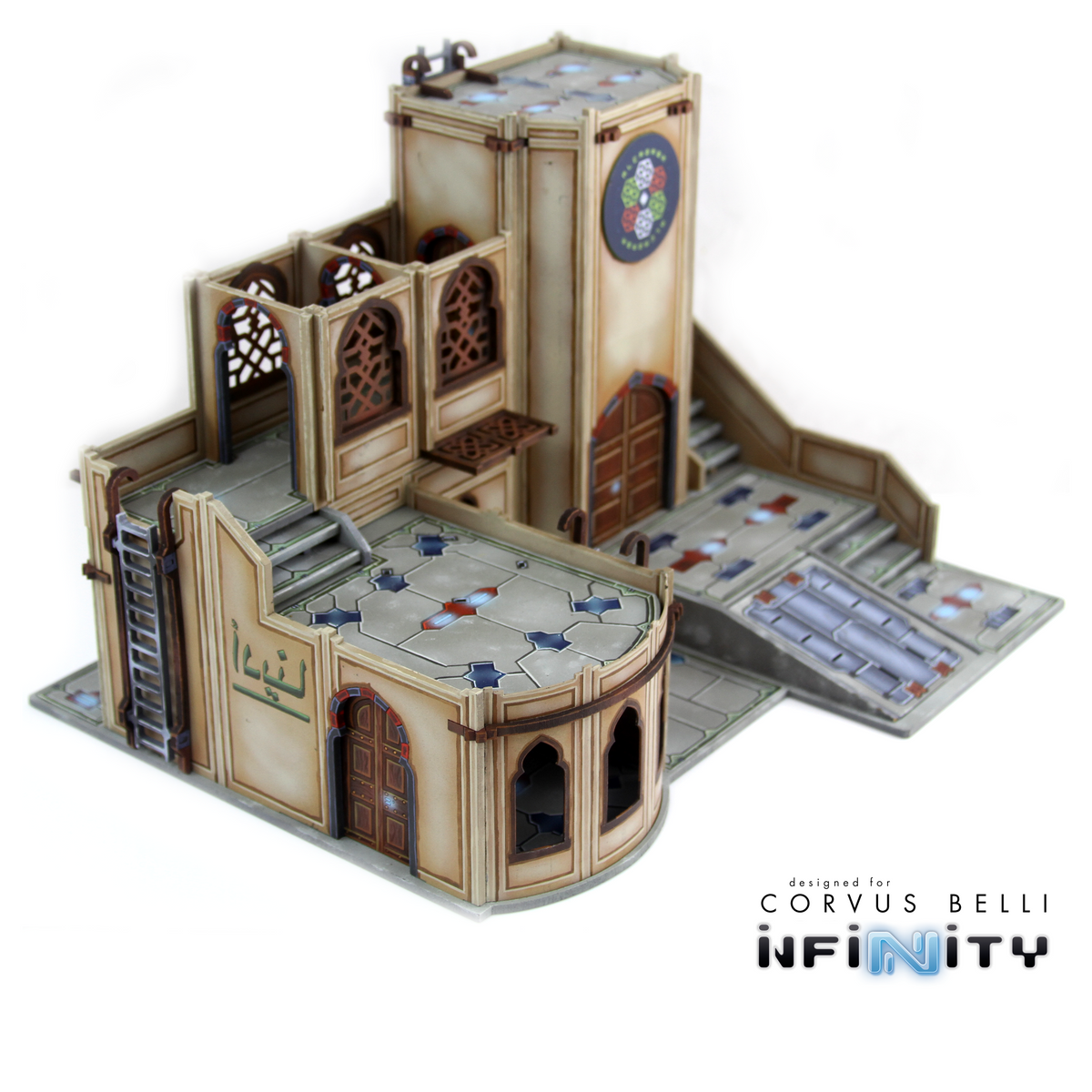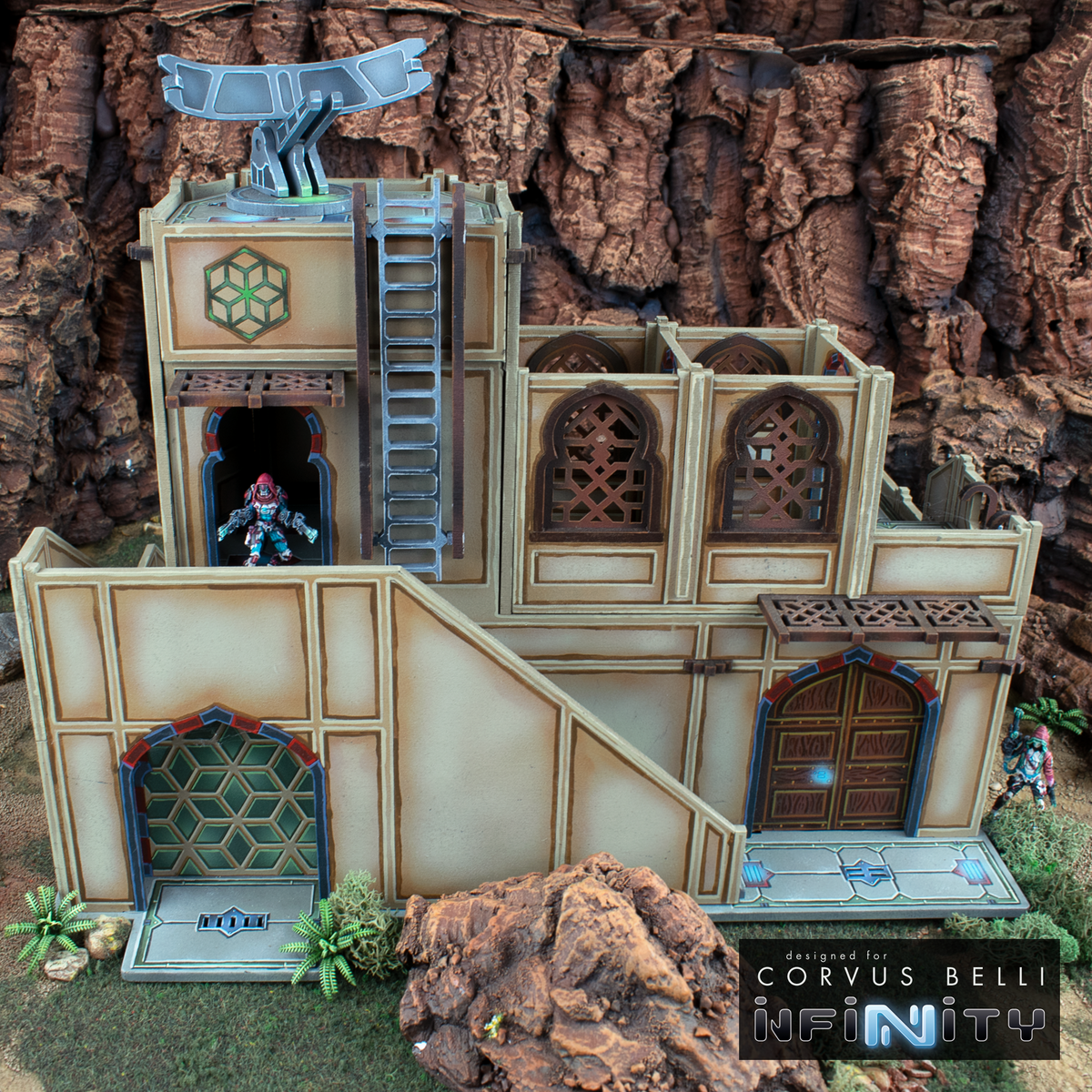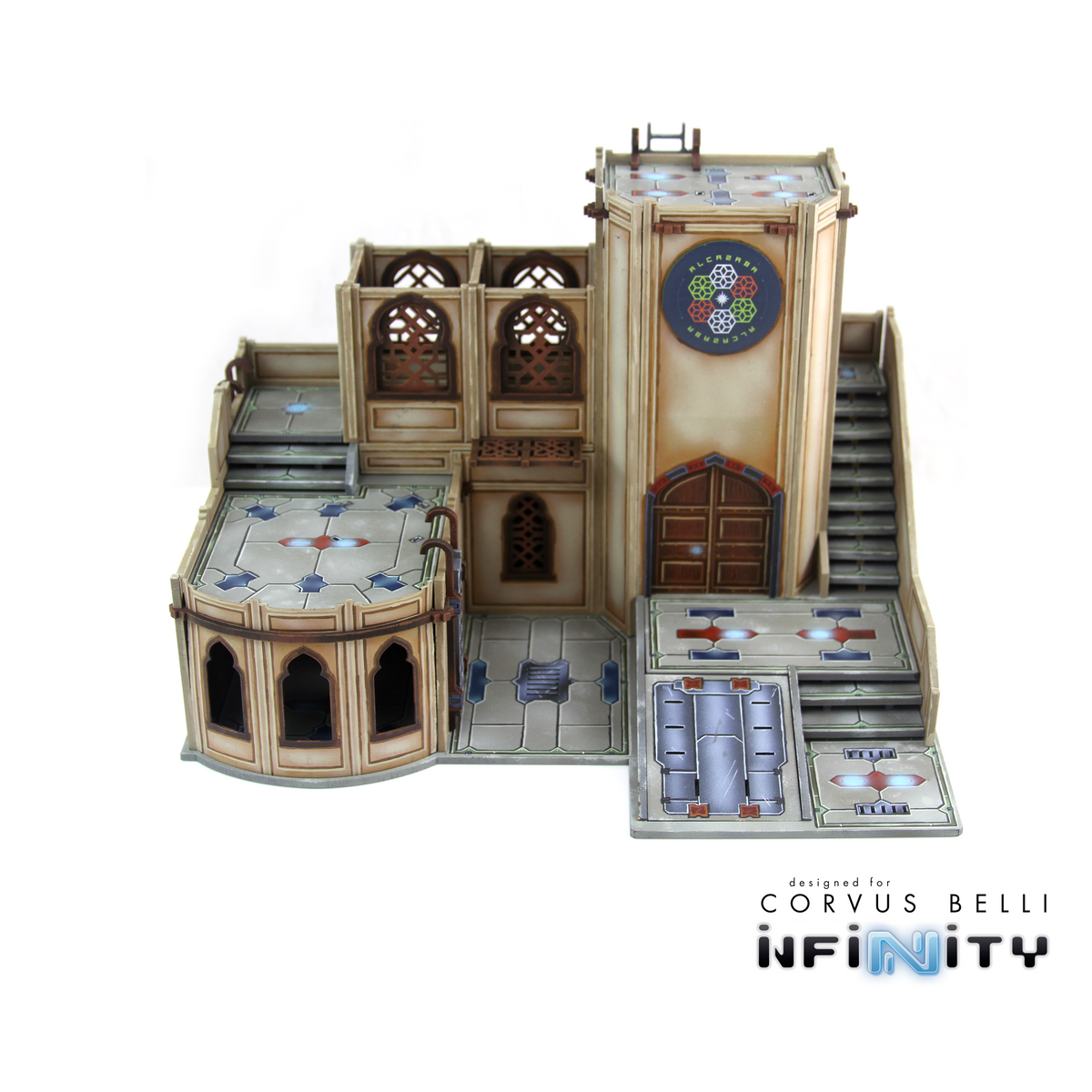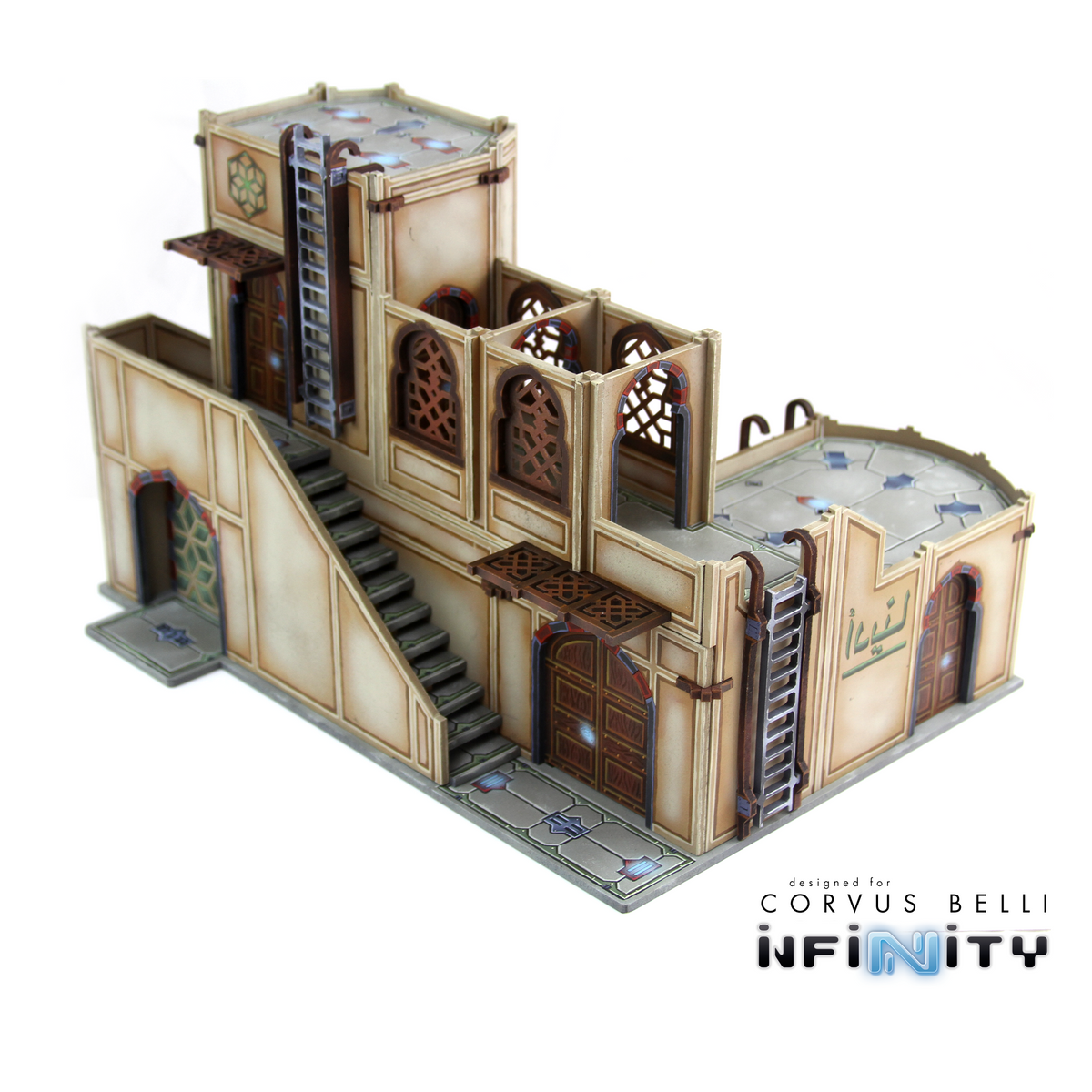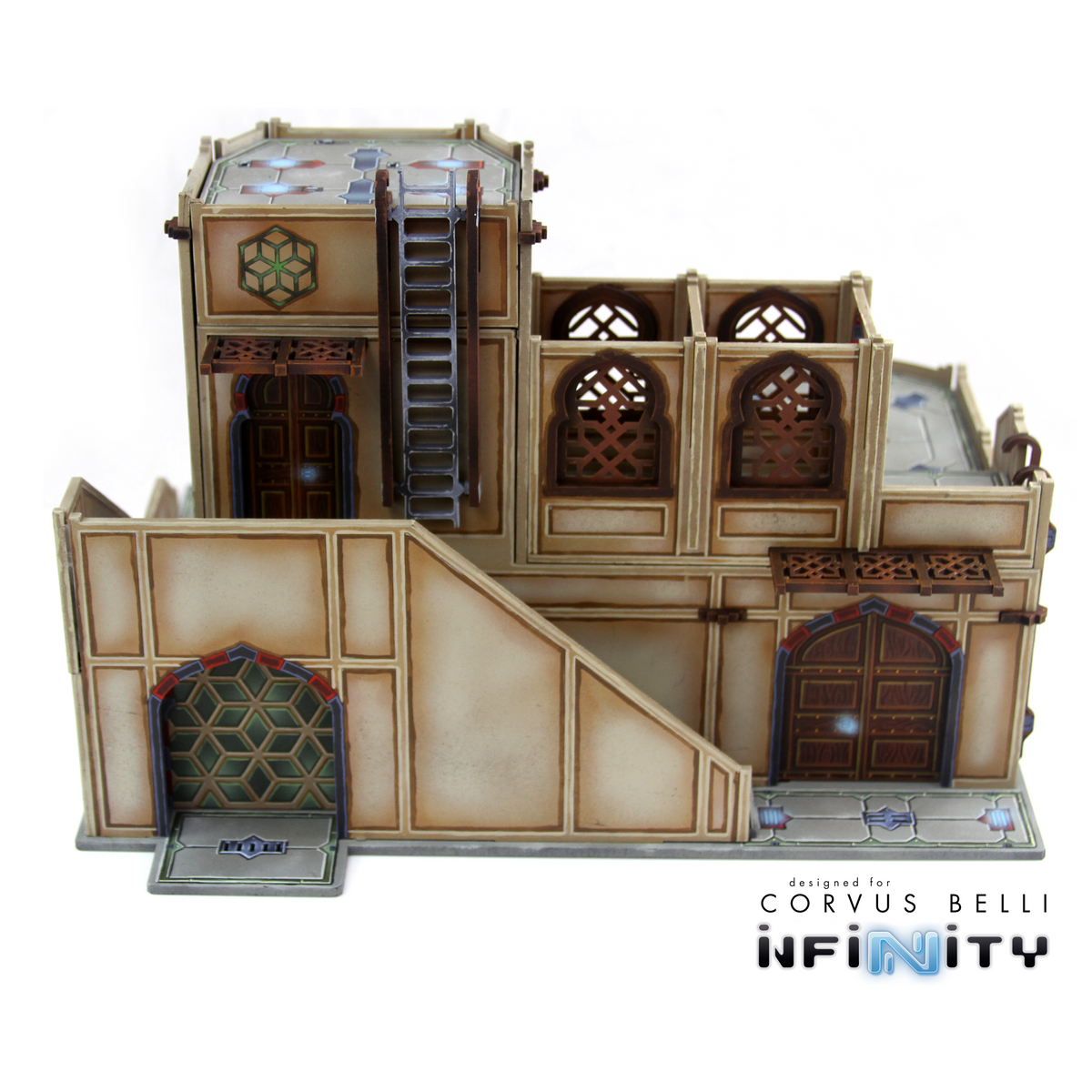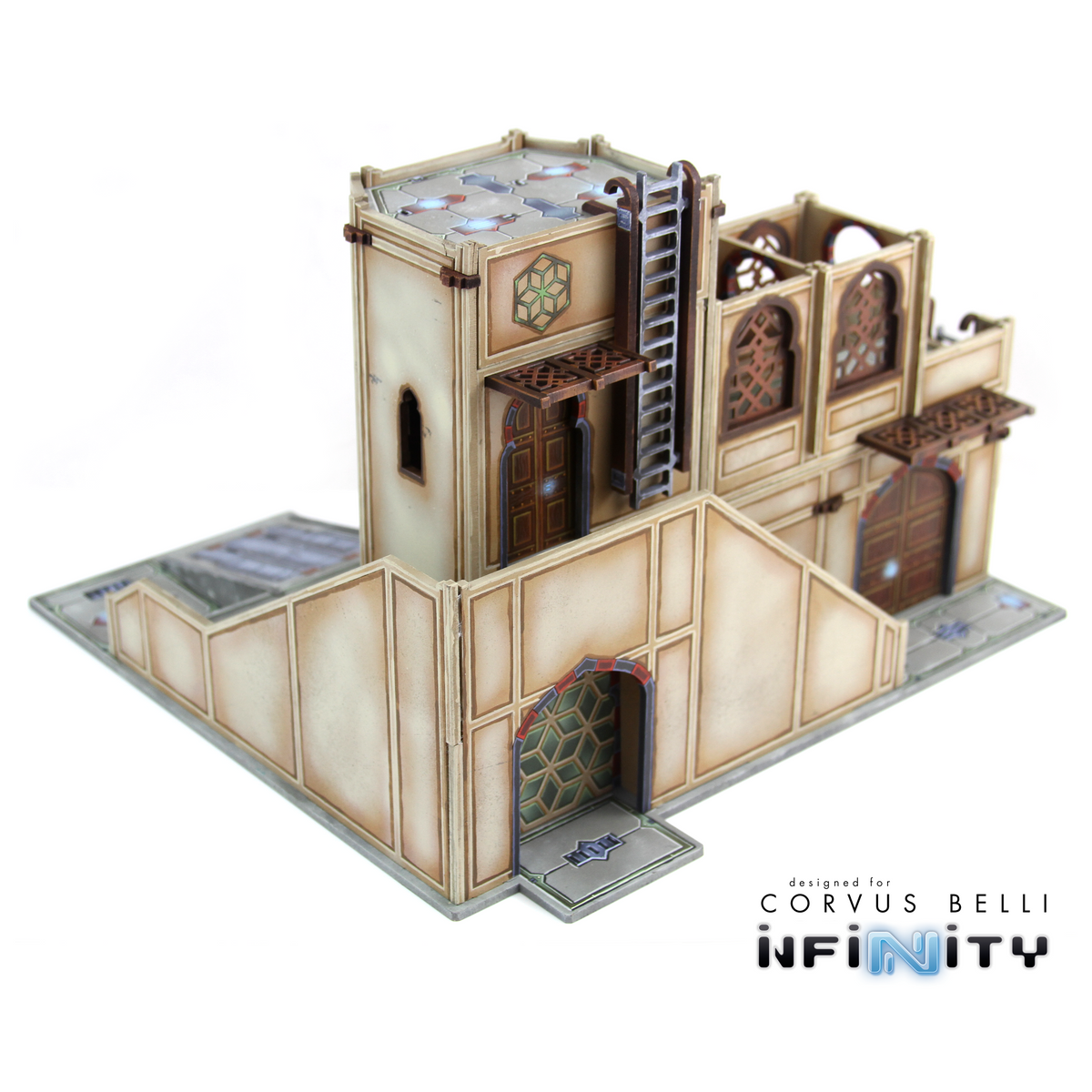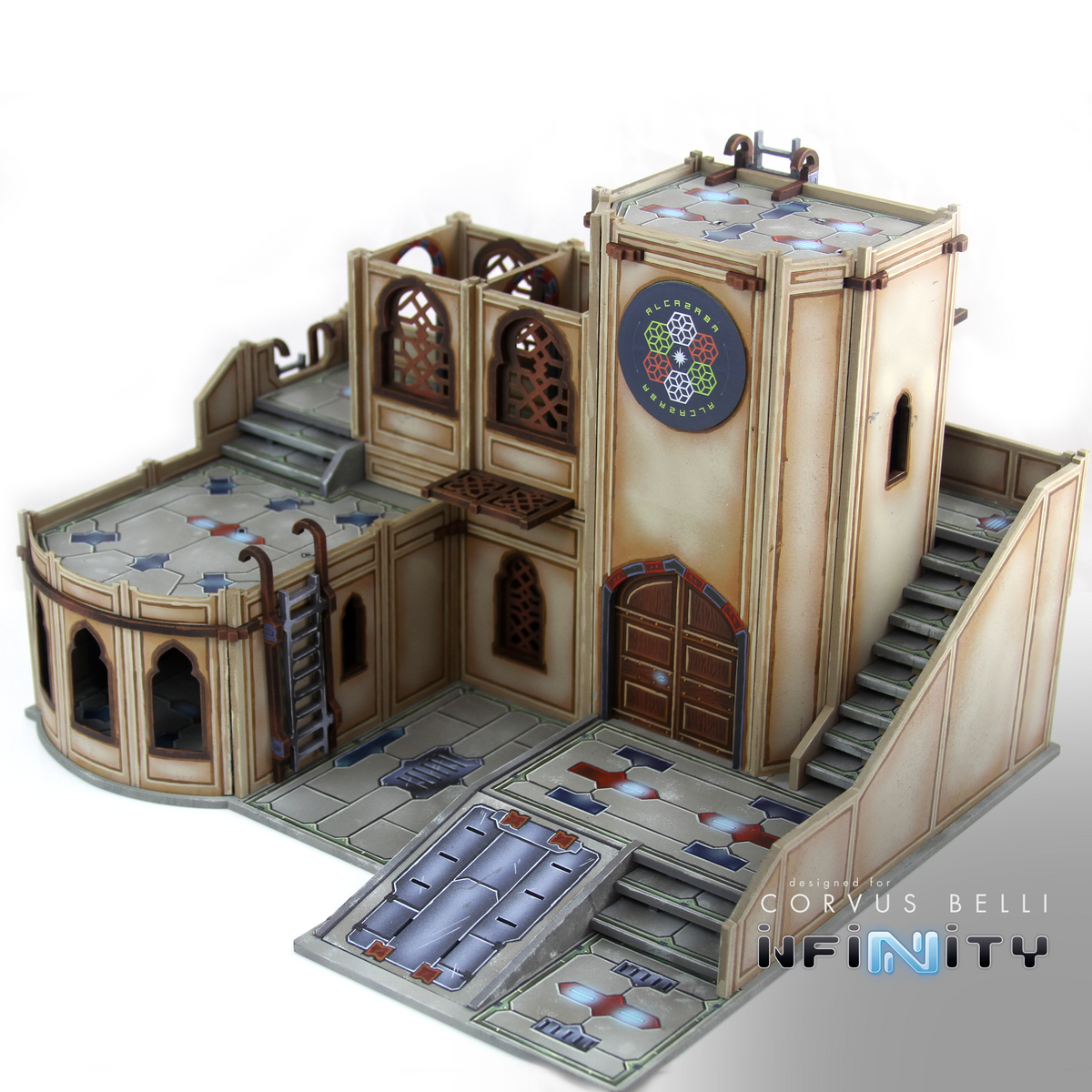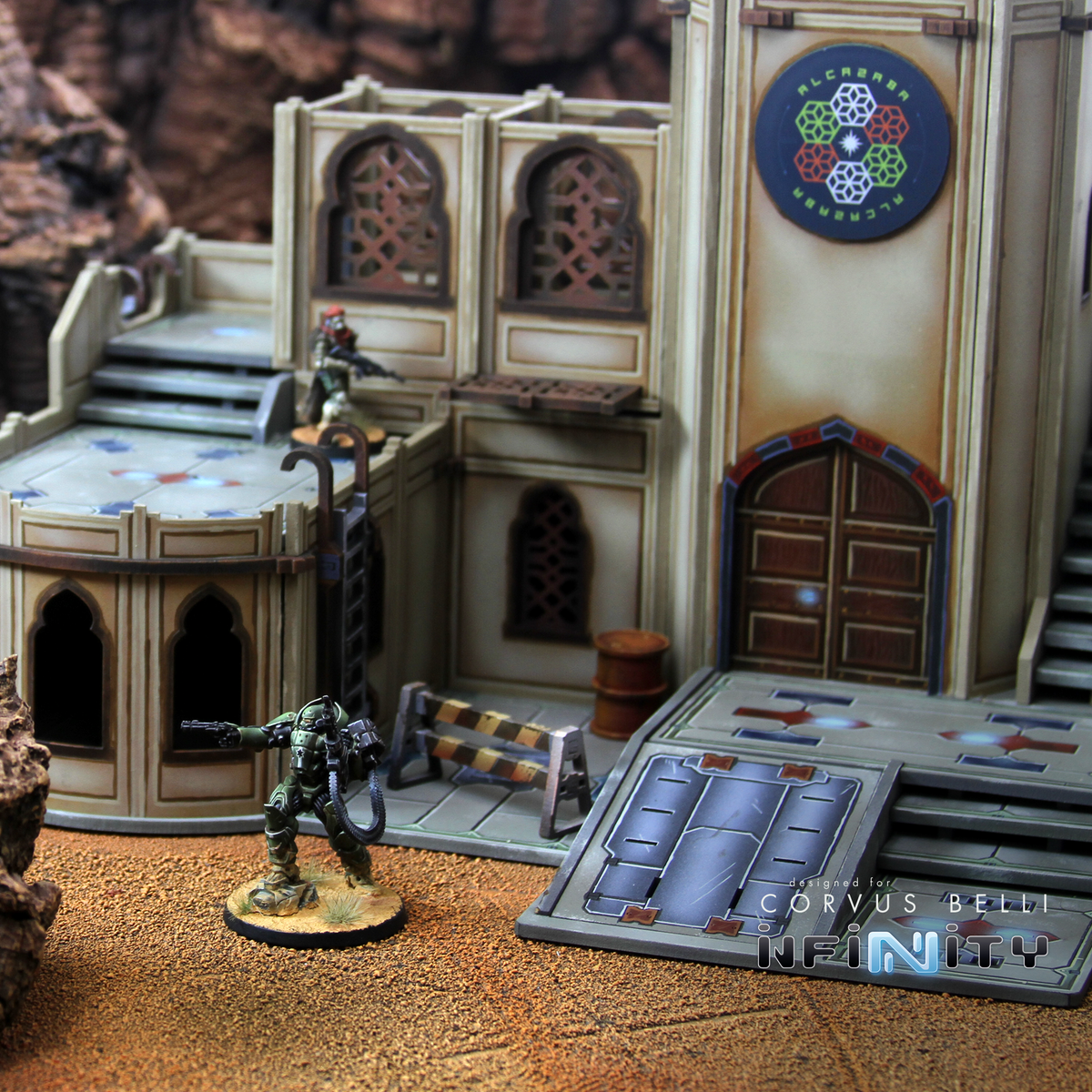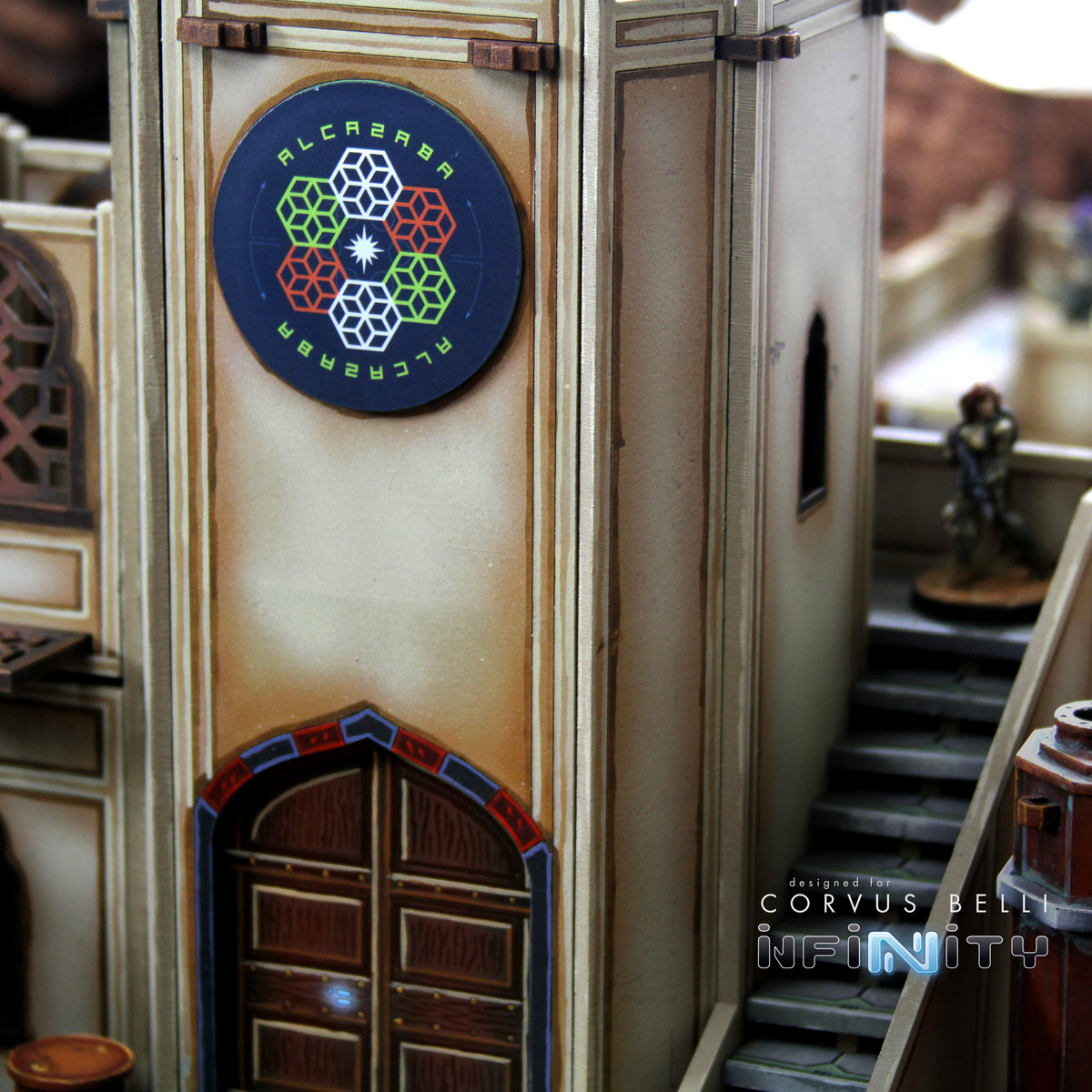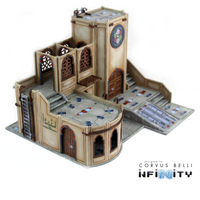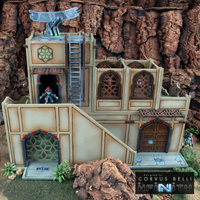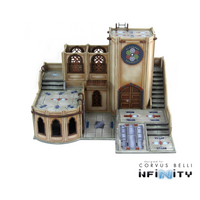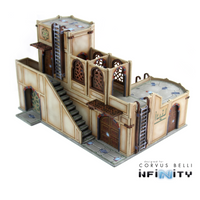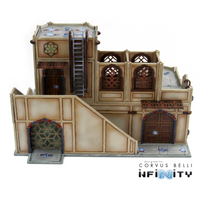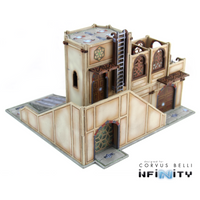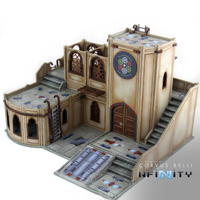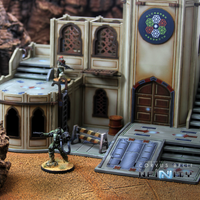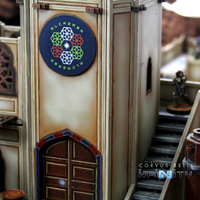Warsenal
Alcazaba Communications Center
- Regular Price
- $90.00
- Sale Price
- $90.00
- Regular Price
- $90.00
- Unit Price
- per
Info
Designed For
This impressive centerpiece building measures a massive 13" x 11" x 8.5" tall. Several levels and rooms offer many tactical possibilities.
Assembly instructions can be found in this PDF. (Coming Soon; in the meantime it is a mirror image of the Warsenal Studio B kit, instructions HERE.)
THE ALCAZABA SERIES
One of the aims of Farhad Khadivar, the founder of Haqqislam, was to recover the cultural and aesthetic splendor of the Golden Age of Islam. With this purpose in mind the colonization of Bourak took the architecture of the ancient Al Andalus as a reference for the region of Al Medinat. Al Medinat became one of the main settlement areas during the early stages of the Bourak colonization process because it boasted the most favorable climatic and environmental conditions compared with the rest of the planet.
Yd Yamnaa Incorporated — better known as Y2 Inc. — would be one of the leading urban development contractors in the Al Medinat region. Fleeing from merely functional concepts so typical of the colonial areas, the Al Andalus inspiration crystallized in the so-called Alcazaba series. This architectural model combined structural resistance with a stylistic concept that drank from historical sources to create buildings of great visual harmony.
The success of the Alcazaba series would bring Y2 Inc. development contracts from other areas of the planet, making these buildings part of Bourak’s urban landscape. The Alcazaba series would become the main product of Y2 Inc., drawing the attention of the giant Muqid Group that later would absorb Y2 Inc. and make it a subsidiary. The Alcazaba series continued to expand throughout the territories of Bourak under the seal of this corporation. However, experts already distinguish a time before and after the absorption, in which the application of more advanced construction techniques give these buildings a greater ecological efficiency.
An article by Natalya Stepanova for the Journal of Cultural Studies of the University of Manaheim. Concilium Prima.
